
Taiwan, officially the Republic of China (ROC), is a country in East Asia. It shares maritime borders with the People's Republic of China (PRC) to the northwest, Japan to the northeast, and the Philippines to the south. The main island of Taiwan has an area of 35,808 square kilometres (13,826 sq mi), with mountain ranges dominating the eastern two-thirds and plains in the western third, where its highly urbanised population is concentrated. The capital is Taipei, which, along with New Taipei and Keelung, forms the largest metropolitan area of Taiwan. Other major cities include Kaohsiung, Taichung, Tainan and Taoyuan. With 23.57 million inhabitants, Taiwan is among the most densely populated countries in the world.
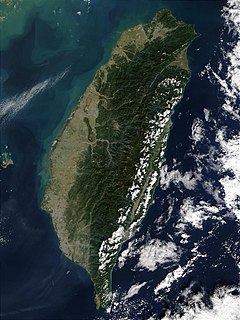
Taiwan, officially the Republic of China (ROC), is an island country in East Asia. The main island of Taiwan, known historically in Portuguese and English as Formosa, makes up 99% of the area controlled by the ROC, measuring 35,808 square kilometres (13,826 sq mi) and lying some 180 kilometres (112 mi) across the Taiwan Strait from the southeastern coast of mainland China. The East China Sea lies to the north of the island, the Philippine Sea to its east, the Luzon Strait directly to its south and the South China Sea to its southwest. The ROC also controls a number of smaller islands: some in the Taiwan Strait, and some of the South China Sea Islands.

Taiwan, officially called the Republic of China, has full diplomatic relations with 14 out of 193 United Nations member states, as well as the Holy See. Historically, the ROC has required its diplomatic allies to recognise it as the sole legitimate government of "China", but since the 1990s, its policy has changed into actively seeking dual recognition with the People's Republic of China. In addition to these relations, the ROC also maintains unofficial relations with 58 UN member states via its representative offices and consulates.
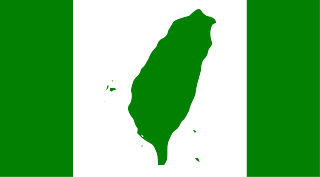
The Taiwan independence movement is a political movement to seek formal international recognition of Taiwan as an independent, sovereign state and in opposition to Chinese unification. Many of who advocate “independence” from the Republic of China and the formation of the Republic of Taiwan (台灣共和國)

Taiwanese indigenous peoples, Formosan people, Austronesian Taiwanese, Yuanzhumin or Gāoshān people, are the indigenous peoples of Taiwan, who number about 569,000 or 2.38% of the island's population. This total is increased to more than 800,000 people if the indigenous peoples of the plains in Taiwan are included, pending future official recognition. Recent research suggests their ancestors may have been living on Taiwan for approximately 6,500 years. A wide body of evidence suggests Taiwan's indigenous people maintained regular trade networks with regional cultures before major Han (Chinese) immigration from continental Asia began in the 17th century.

Mainland China, also known as the Chinese Mainland, China Mainland, or the Mainland Area of the Republic of China is the geopolitical area under the direct jurisdiction of the People's Republic of China (PRC) since October 1, 1949. It includes Hainan, which is an island province in the South China Sea, but it excludes the special administrative regions of Hong Kong and Macao, even though both are mostly on the geographic continental landmass.

Taipei, officially Taipei City, is the capital and a special municipality of Taiwan. Located in Northern Taiwan, Taipei City is an enclave of the municipality of New Taipei City that sits about 25 km (16 mi) southwest of the northern port city of Keelung. Most of the city rests on the Taipei Basin, an ancient lakebed. The basin is bounded by the relatively narrow valleys of the Keelung and Xindian rivers, which join to form the Tamsui River along the city's western border.
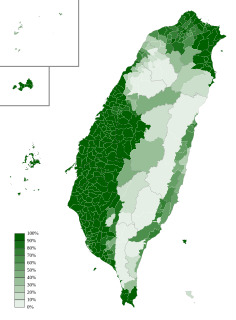
Taiwanese, also known as Taigi, Taiwanese Minnan, Holo, Taiwanese Hokkien, is a variety of the Hokkien language spoken natively by about 70% of the population of Taiwan. It is spoken by the Taiwanese Hoklo people, who descended from immigrants from southern Fujian during the Qing dynasty. The Pe̍h-ōe-jī (POJ) romanization is a popular orthography for Taiwanese.
The controversy regarding the political status of Taiwan, sometimes referred to as the Taiwan Issue or Taiwan Strait Issue or, from a Taiwanese perspective, as the mainland Issue, is a result of the Chinese Civil War and the subsequent split of China into the two present-day self-governing entities of the People's Republic of China and the Republic of China.
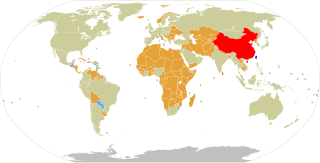
The "One-China policy" is a policy asserting that there is only one sovereign state under the name China, as opposed to the idea that there are two states, the People's Republic of China (PRC) and the Republic of China (ROC), whose official names incorporate "China". Many states follow a one-China policy, but the meanings are not the same. It also differs from "One China Principle", the term used by PRC.
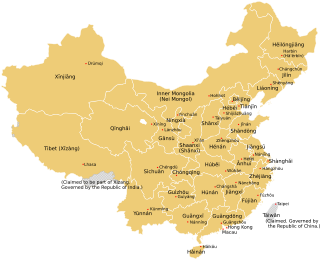
Provincial-level administrative divisions or first-level administrative divisions, are the highest-level Chinese administrative divisions. There are 34 such divisions claimed by the so called People's Republic of China, classified as 23 provinces, four municipalities, five autonomous regions, and two Special Administrative Regions. The political status of Taiwan Province along with a small fraction of Fujian Province remain in dispute, those are under separate rule by the Republic of China, which is usually referred to as "Taiwan".
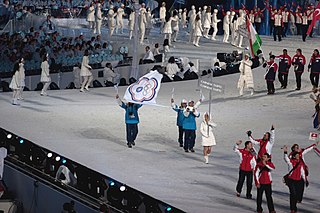
"Chinese Taipei" is a designated term being used in various international organizations and tournaments for the representation of the Republic of China (ROC), commonly known as Taiwan.

Chinese people are people or ethnic groups identified with China, usually through ethnicity, nationality, citizenship, or other affiliation.

The Republic of China Navy (ROCN), also retroactively known as the Chinese Navy and commonly known as the Taiwanese Navy is the maritime branch of the Republic of China Armed Forces on Taiwan.

Cross-Strait relations refer to the relationship between the following two political entities, which are separated by the Taiwan Strait in the west Pacific Ocean:

Tsai Ing-wen is a Taiwanese politician and academic serving as the seventh President of the Republic of China (Taiwan) since 2016. A member of the Democratic Progressive Party (DPP), Tsai is the first female president of Taiwan. She has served as Chair of the DPP since 2020, and previously from 2008 to 2012 and 2014 to 2018.
Taiwanese people may be generally considered the people of Taiwan who share a common culture, ancestry and speak Taiwanese Mandarin, Hokkien, Hakka or indigenous Taiwanese languages as a mother tongue.

From 1895 to 1945, the islands of Taiwan and the Penghu Islands became a dependency of Japan in 1895 when the Qing dynasty ceded Taiwan Province in the Treaty of Shimonoseki after the Japanese victory in the First Sino-Japanese War. The short-lived Republic of Formosa resistance movement was suppressed by Japanese troops and quickly defeated in the Capitulation of Tainan, ending organized resistance to Japanese occupation and inaugurated five decades of Taiwan under Japanese rule. Its administrative capital was in Taihoku (Taipei) led by the Governor-General of Taiwan.
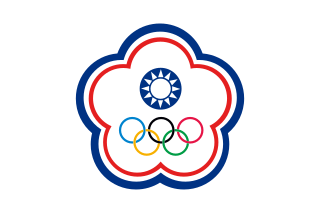
Taiwan currently competes as "Chinese Taipei" at the Olympic Games. The Republic of China first participated at the Summer Olympic Games in 1932. After the Chinese Civil War the ROC retreated to the island of Taiwan and only Taiwan-based athletes have competed in its team since then. The ROC boycotted the Olympics starting from the 1976 Summer Games until it returned to the 1984 Winter Games, and started participating as Chinese Taipei.

The COVID-19 pandemic in Taiwan is part of the worldwide pandemic of coronavirus disease 2019 caused by severe acute respiratory syndrome coronavirus 2. As of 9 August 2021, 4,121,955 tests had been conducted in Taiwan, of which 15,790 are confirmed cases, including 813 deaths.


















